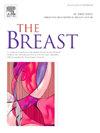Trends in the global, national, and regional burden of breast cancer among adolescents and young adults from 1990 to 2021: Analyses of the 2021 global burden of disease study
IF 7.9
2区 医学
Q1 OBSTETRICS & GYNECOLOGY
引用次数: 0
Abstract
Background
This study was devised to evaluate the burden of breast cancer (BC) among adolescents and young adults (AYAs) between 1990 and 2021.
Methods
BC burden among AYAs (15–39 years of age) was analyzed by examining the associated age-standardized incidence rate, age-standardized prevalence rate, age-standardized death rate, and age-standardized disability-adjusted life year (DALY) rates between 1990 and 2021 at the global, national, and regional levels, together with corresponding analyses of health inequality and decomposition analyses.
Results
In 2021, the respective global age-standardized incidence rate, age-standardized prevalence rate, age-standardized death rate, and age-standardized DALYs for BC were 5.87 (5.39,6.41), 49.35 (45.46,53.86), 1.37 (1.24,1.51), and 80.8 (72.84,89.23), which respectively showed increases of 33.4 %, 35.2 %, 1.5 %, and 3.3 % compared to the rate of 1990. While women comprise the vast majority of all BC cases, a higher average annual percent change was observed for males relative to females at the global level. The average annual percent change for BC incidence, prevalence, death, and DALYs among men AYAs (2.59, 2.49, 1.06, 1.10) were all higher than the corresponding values among women (0.91, 0.96, 0.02, 0.09). Regional and national differences in disease burden were observed. BC disease burden was significantly positively correlated with socio-demographic index (SDI). Similar trends were observed in terms of female disease burden, whereas disease burden of male patients was negatively related to SDI. In decomposition analyses, the primary factors associated with changes in age-standardized DALY rates were identified as aging and population growth. Health inequality analyses revealed that the burden of BC among AYAs was particularly concentrated in lower-income countries.
Conclusions
These results highlight that the burden of BC among AYAs has grown in recent decades, while also emphasizing the need to be attentive to the rising occurrence of male BC. Lower-income regions also faced a heavier BC-related burden as compared to more affluent nations. Efforts to reduce the disease burden associated with BC may thus hinge on government-based initiatives focused on improving overall national economic strength and medical system quality.
1990年至2021年全球、国家和区域青少年和年轻人乳腺癌负担趋势:对2021年全球疾病负担研究的分析
本研究旨在评估1990年至2021年间青少年和青壮年(AYAs)的乳腺癌(BC)负担。方法通过分析1990 - 2021年全球、国家和地区各级年龄标准化发病率、年龄标准化患病率、年龄标准化死亡率和年龄标准化残疾调整生命年(DALY)率,并进行相应的健康不平等分析和分解分析,分析15-39岁青少年的bc负担。结果2021年,BC全球年龄标准化发病率、年龄标准化患病率、年龄标准化死亡率和年龄标准化DALYs分别为5.87(5.39,6.41)、49.35(45.46,53.86)、1.37(1.24,1.51)和80.8(72.84,89.23),较1990年分别上升33.4%、35.2%、1.5%和3.3%。虽然女性占所有BC病例的绝大多数,但在全球范围内,男性的平均年百分比变化高于女性。男性AYAs的BC发病率、患病率、死亡率和DALYs的年平均变化百分比(2.59、2.49、1.06、1.10)均高于女性的相应值(0.91、0.96、0.02、0.09)。观察到地区和国家在疾病负担方面的差异。BC疾病负担与社会人口指数(SDI)显著正相关。在女性疾病负担方面也观察到类似的趋势,而男性患者的疾病负担与SDI呈负相关。在分解分析中,与年龄标准化DALY率变化相关的主要因素被确定为老龄化和人口增长。卫生不平等分析显示,青少年助理医生的BC负担特别集中在低收入国家。结论:这些结果表明,近几十年来,美国青少年的BC负担有所增加,同时也强调需要关注男性BC发病率的上升。与富裕国家相比,低收入地区也面临着更沉重的bc相关负担。因此,减少与BC相关的疾病负担的努力可能取决于以政府为基础的举措,重点是提高整体国民经济实力和医疗系统质量。
本文章由计算机程序翻译,如有差异,请以英文原文为准。
求助全文
约1分钟内获得全文
求助全文
来源期刊

Breast
医学-妇产科学
CiteScore
8.70
自引率
2.60%
发文量
165
审稿时长
59 days
期刊介绍:
The Breast is an international, multidisciplinary journal for researchers and clinicians, which focuses on translational and clinical research for the advancement of breast cancer prevention, diagnosis and treatment of all stages.
 求助内容:
求助内容: 应助结果提醒方式:
应助结果提醒方式:


